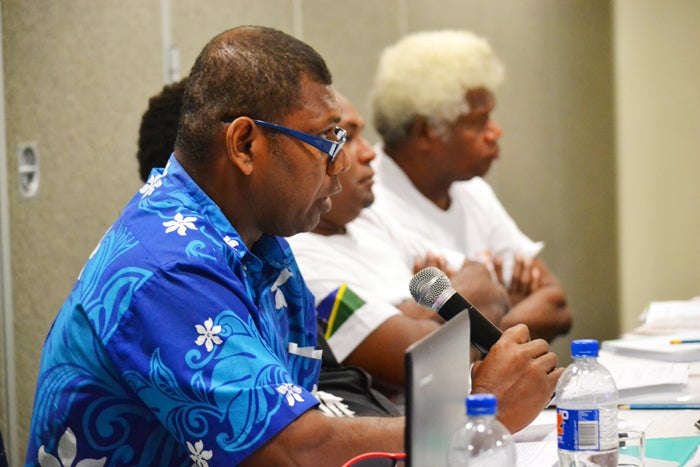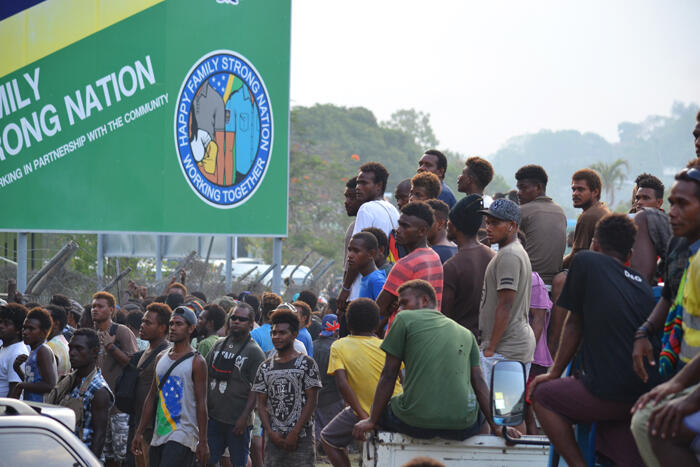Fundamental to any national development plan is or should be a population policy: it is not a policy to control the number of children you have for this is a basic human right of all individuals, but rather a cross-sectoral evidence-based plan and management on our collective progress as a people, as a nation.
Populations, whether increasing, stabilized or decreasing have implications on all aspects of our lives, from your ability to negotiate accessibility to essential services like education and health care for example, to our nation's capacity to provide them.
Population policies reflects a government's commitment to responding to issues related to social and the economic dynamcs inextricably woven into our choices: from people deciding how many children they will have if they want to have children, to migratory patterns.
Globally-speaking, the world population reached 6.92 billion in July 2010 and is expected to increase to 9.55 billion in 2050; the 7 billion mark was attained in the second semester of 2011 and the 8 billion mark in late 2023.
Although fertility is still high in some developing countries, the rate `of population growth has diminished considerably during the past 50 years. The annual rate of world population growth peaked at 2.02 per cent during the period 1965-1970. It declined to 1.20 per cent during 2005-2010 and is expected to drop further to 0.51 per cent per year in the period 2045-2050.
In the future, most population growth will happen in developing countries. While the population of developed countries is growing at an annual rate of 0.30 per cent, the population of the developing regions is increasing by 1.33 per cent annually, with the least developed countries experiencing an annual population growth of 2.28 per cent.
Population growth is more and more concentrated in a few places. Most growth in absolute numbers will occur among the poorest populations in the urban areas of developing countries.
Solomon Islands Population Policy 2017-2026
The Government of Solomon Islands this week celebrated the launch of their population policy which has been a decade-long journey for the island nation of over 600,000 people.
Launched by Honourable Minister for National Development and Aid Co-ordination Danny Philip, key population and development issues the population policy 2017-2026 is designed to address are: Sustainable and inclusive social and economic development; Respect for human rights of all people; Essential social and community services are accessible by all community members; The policy is for all people equally and inclusively; and Maintaining the social and economic security of the Solomon Islands.
The policy also recognizes, amongst other important population and development factors, the critical role men play in a couple's uptake of contraception and recommends the promotion of male involvement in family planning. In the Solomon Islands, the use of modern family planning has remained low and the total fertility rate still high at 4.7 children per woman.
"The national population policy is not a population control policy. It does not aim to tell families how many children they can have nor does it attempt to control population movement within the country," Mr Philip said.
"Rather the policy is emphasizing on management and planning for sustained improved living standards. The policy in this respect is very much consistent with the national development strategy (NDS) 2016-2035 and other sector plans.
Mr Philip underlined that the policy captured the most pertinent population and development issues "formulated with Solomon Islands' own cultural values clearly in mind."
In her remarks, UNFPA Solomon Islands Programme Specialist Pauline McNeil said the document "would support people across different age groups".
Mrs McNeil noted that her country's population was heavily skewed towards youth: the majority of the population is under age 20 - more than two out of five people are under age 15.
"The new policy recognizes that high fertility and high unmet need for contraception, which have persisted for a long time, have contributed to this state of affairs," Mrs McNeil said.
"In Solomon Islands, the use of modern family planning has remained low and that total fertility rate is still high at 4.7 children per woman. The policy supports programmes that aim to increase public awareness of the implications of rapidly growing population and which promote acceptance and use of family planning.
"The National Population Policy places great priority on overcoming inequalities and exclusions - building fairer, freer and more caring communities that include everyone, regardless of differences. But this cannot depend on individuals and families alone.
"It needs the commitment of the government and each and every one of us, backed by sufficient resources, to support individuals and families in all their diversity - particularly the poorest and most vulnerable in our rural areas - to provide an improved quality of life across the spectrum.
"UNFPA - and the wider UN system -- are confident that with political will, genuine dialogue and respectful collaboration between government and civil society, the challenges of today can be turned on their head and transformed into opportunities for a far better tomorrow.
"As long as we remember that behind the numbers it's always about real people and their lives and stories, we can truly ensure that everyone counts."
Demographic dividend
A youthful population base like that of the Solomon Islands represents an opportunity which Mrs McNeil emphasized at the annual UNFPA-supported three-day provincial planners' conference following the population policy launch.
The 2014 United Nations Population Fund, UNFPA, State of World Population Report identified five Pacific Island nations - Papua New Guinea, Samoa, Solomon Islands, Tonga and Vanuatu - where a demographic dividend is possible. A demographic dividend is when the working-age population is relatively larger than the non-working-age population (or dependents who are mainly children and the elderly).
"As the number of births each year declines, the young dependent population grows smaller in relation to the working-age population. With more workers and fewer young people to support, a country has a window of opportunity for accelerated economic growth, known as the demographic dividend," Mrs McNeil told provincial planners.
"Young people represent accelerated economic growth but key investments in health, education, economic and governance are necessary to lower fertility and mortality, and allow the population structure to change."
UNFPA Pacific Sub-Regional Office Representative and Director Bruce Campbell congratulated the Solomon Islands Government, particularly the Ministry of National Development Planning and Aid Coordination for its determination to see through the project.
"This document has potential to drive economic and social progress for all people of the Solomon Islands as a guideline to targeted development planning and approaches; it is also so very important for taking advantage of the special window of opportunity for a demographic dividend in a relatively young population," Mr Campbell said.
"When countries invest in the education and health of their youth populations and create opportunities for them to realize their full potential, they are positioned to realize a demographic dividend which can propel economic growth."
The new 2030 Agenda for Sustainable Development is an unprecedented opportunity for peoples of developing countries to count, to claim their right and realize their aspirations; Pacific island nations like the Solomon Islands can determine how they fare through policies which create enabling environment for our collective progress.
We cannot afford to miss this wave.



